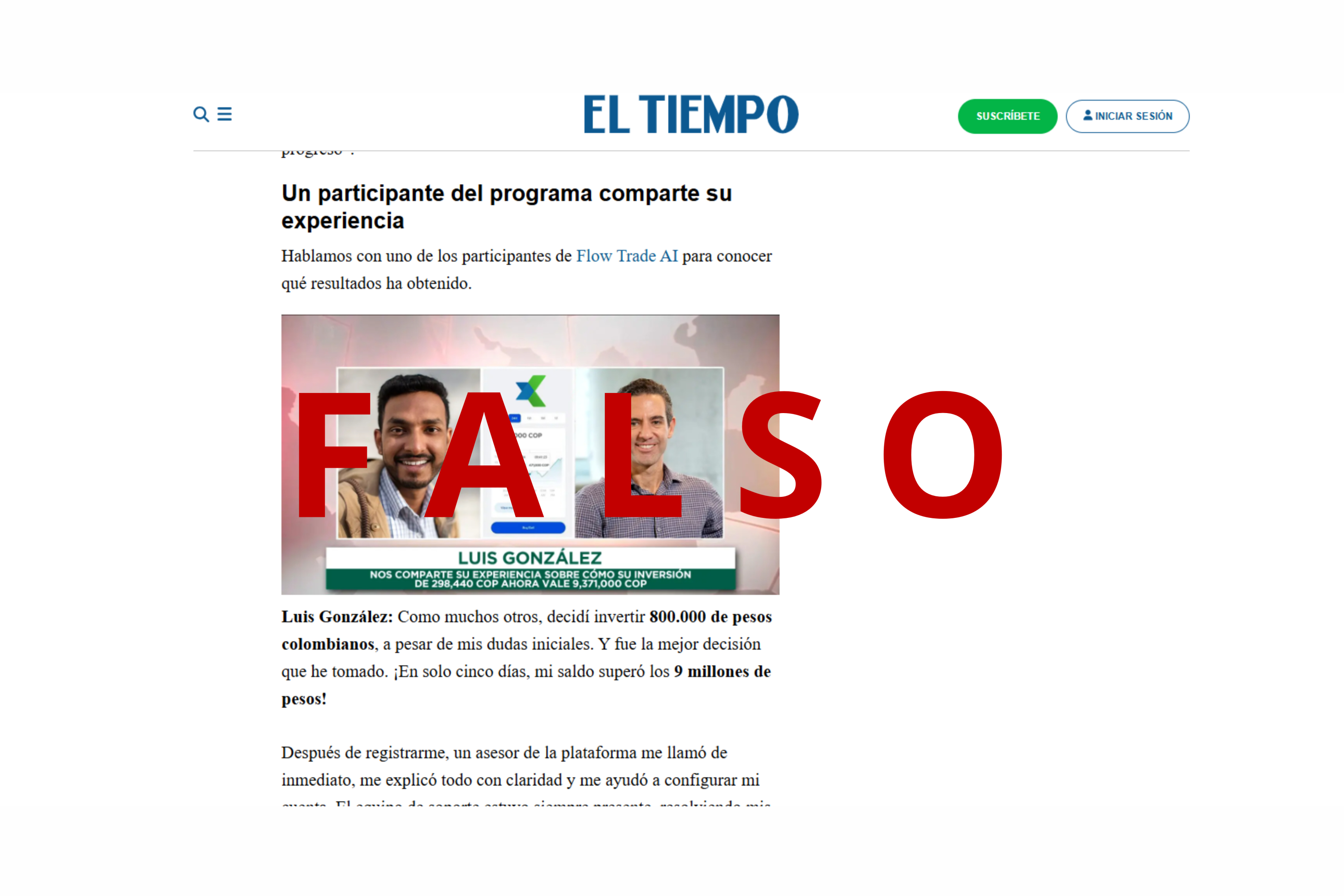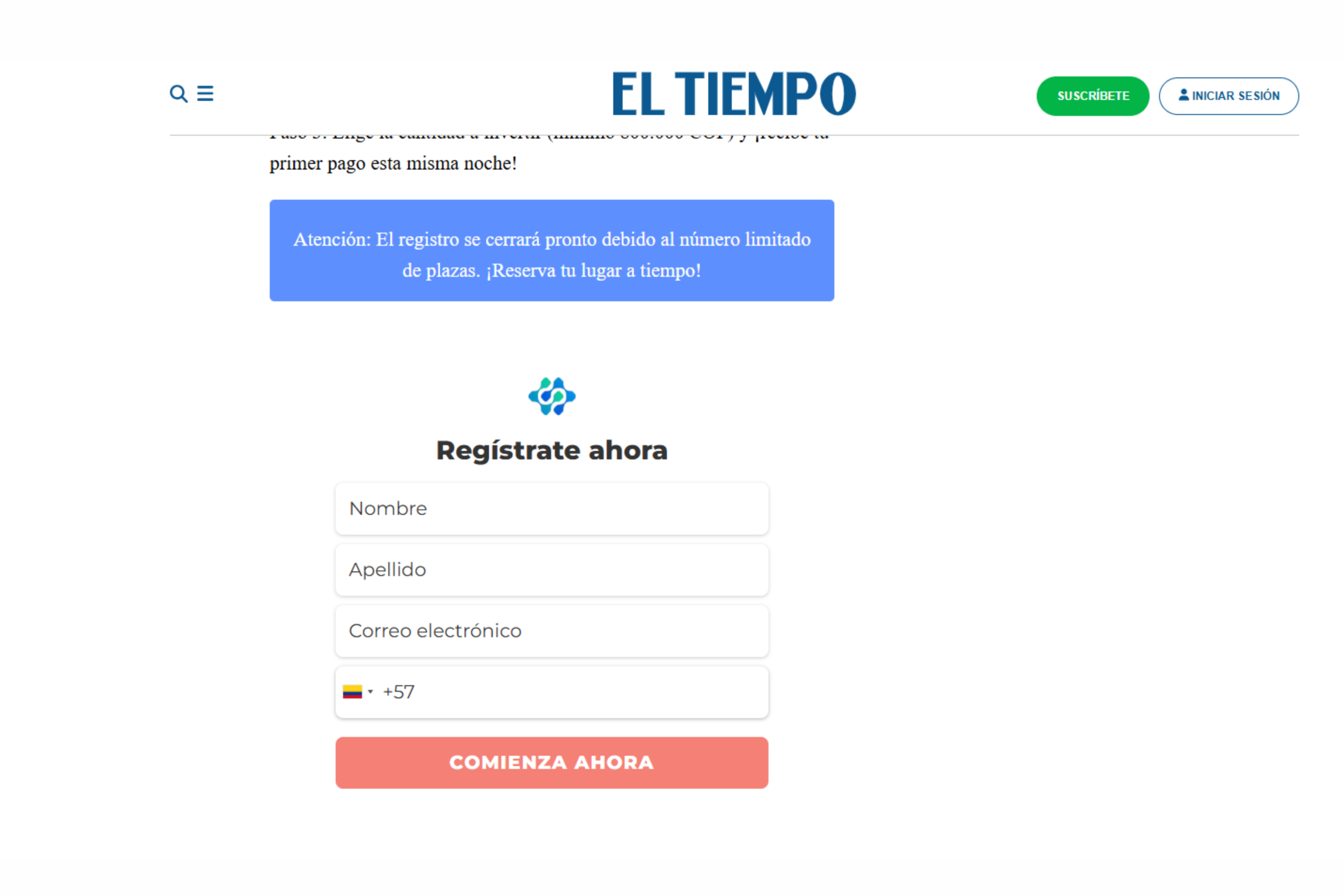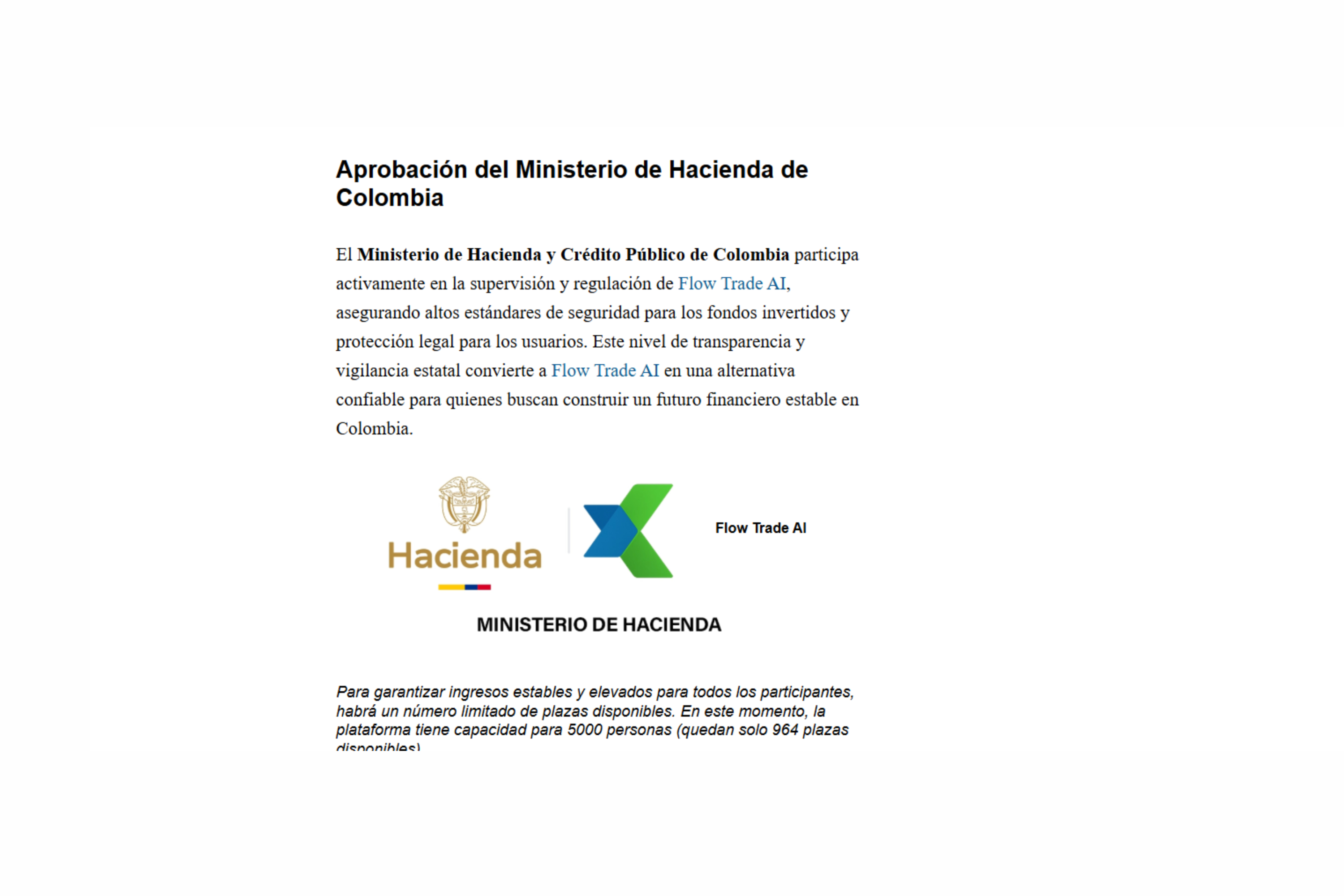Beware of this scam in Colombia that uses the image of David Vélez, CEO of Nubank, and EL TIEMPO in a fake article.

A fake website purporting to be EL TIEMPO shared misleading information about a supposed investment program powered by a platform called Flow Trade AI , promoted by Nubank CEO David Vélez. Be very careful with these types of misleading posts, as your personal information and money could be at risk if you believe them.
This is how the Flow Trade scam works in Colombia. On one page, scammers recreated EL TIEMPO 's website with its entire visual identity to show a supposed "exclusive interview" with the bank's CEO. The title was " 9,400,000 COP per week without experience? How more than 10,000 Colombians have already taken advantage of David Vélez's initiative—and why traditional banks are against it" to promote the use of the Flow Trade platform.

Flow Trade AI Scam Photo: Private File
In this same article, these cybercriminals claim that Bancolombia, the Colombian government, the Ministry of Commerce, Industry, and Tourism, the Bank of the Republic, Davivienda, and the University of the Andes contributed to the creation of this tool.
With this post, these scammers seek to persuade those who fall into their trap to generate income from an initial contribution, thus unscrupulously extorting their money under the guise of an investment in digital platforms.
At the end of this article, there's a form to register with Flow Trade AI, which asks for your first and last name, email address, and cell phone number. Entering this information could be very detrimental to you, as it could share information with third parties not affiliated with this media outlet or any of the aforementioned public or private entities.

Don't share this information with suspicious websites. Photo: Private archive
This newspaper reiterates that this content is false, unrealistic, and devoid of any foundation. Furthermore, it fraudulently uses some of EL TIEMPO's graphic resources, such as its logo. This article has never been published on any of this newspaper's channels.

The article mentions entities that are not related to or do not approve of these practices. Photo: Private archive
If you happen to see an article about the Flow Trade AI platform, don't click on the links because they're a scam. Your personal information may be at risk.
Always carefully check the URL before clicking. Scammers use various tools to trick you and gain your trust, creating fake pages with URLs that don't correspond to reality. The only page for this site is ELTIEMPO.COM.
- Check basic aspects such as spelling and grammar. Be wary of articles with large titles and all-caps.
- Pay attention to the coherence of the information presented. Be wary if the article suddenly jumps to exaggerated conclusions, if no source is attributed, or if everything is anonymous.
- Ask yourself if the information, video, or image provides the minimum necessary context.
- Question the motivation behind the content, who is sharing it, why, and where it's coming from. A family member or friend may share something without realizing it's fake.
- You can search the internet for the headline or main idea of the article in question to see if it appears in other news sources. Be suspicious if only one source is available and it just happens to be the only one that presents that "information."
- Also, check the website hosting the news. Look in the "About Us" or "About" section to get an idea of what type of site you're visiting.
- Check if the article has links, but they don't lead where they should. Sometimes, disinformation strategies use the visual appearance of another well-known media outlet, but modify the URL.
- Try to go to the sources of the information, regardless of whether it's the media itself, a prominent figure, or an official institution. These types of "breaking news" usually have specific records.
- If they are images or videos, try looking for other places on the web where they are hosted.
- If the video appears to have come from a verified account, check the real account to verify it.
- In the case of photographs, you can download an image and perform a reverse search on Google. Using this Image feature, you'll find photographs similar to the sample and explore, for example, whether it appears in an article with an older date or has been used in other contexts.
- You can also view a document or image's metadata to verify its origin, modifications, and corresponding dates.
Maria Paula Rodriguez Rozo
LATEST NEWS EDITORIAL
eltiempo





